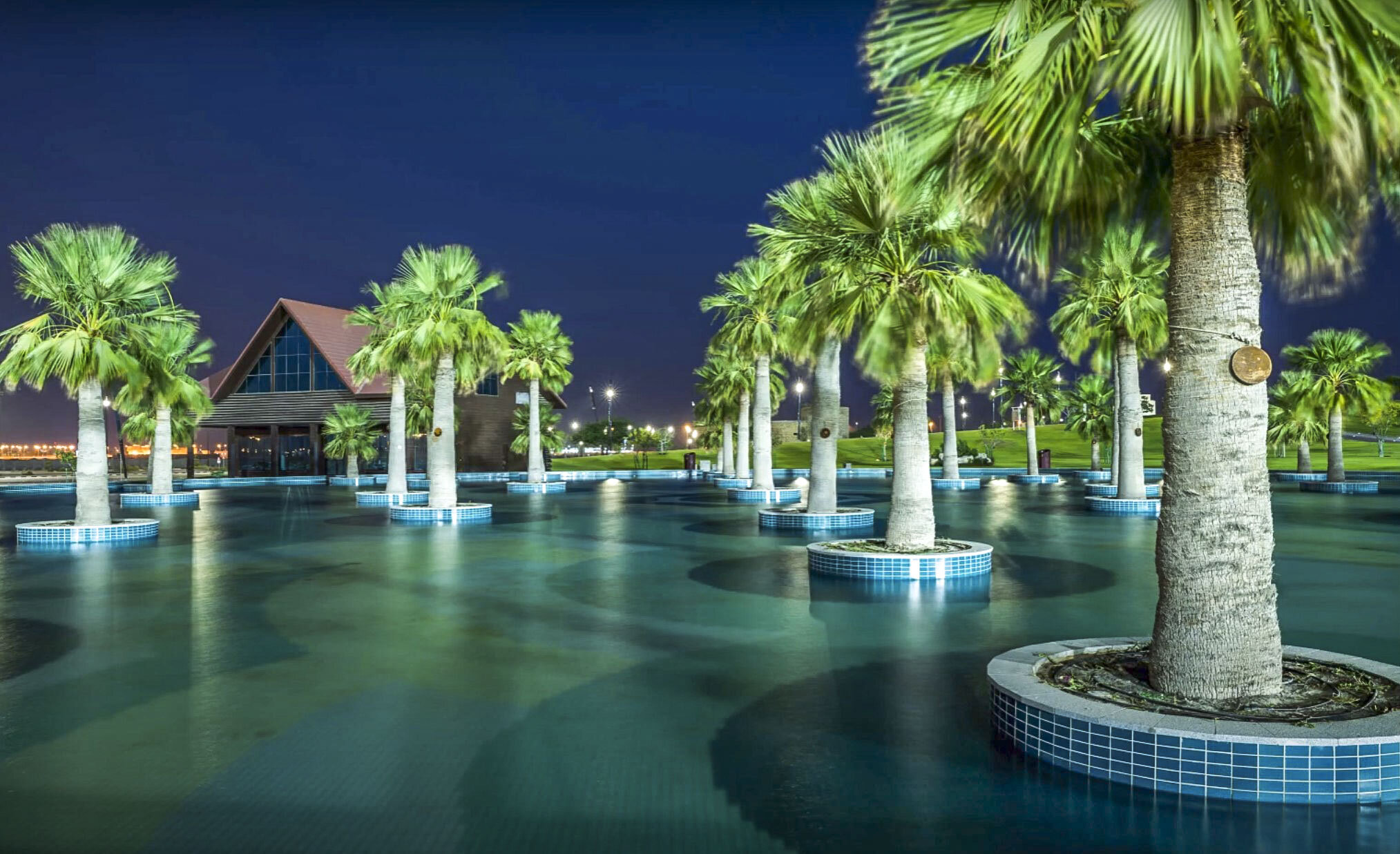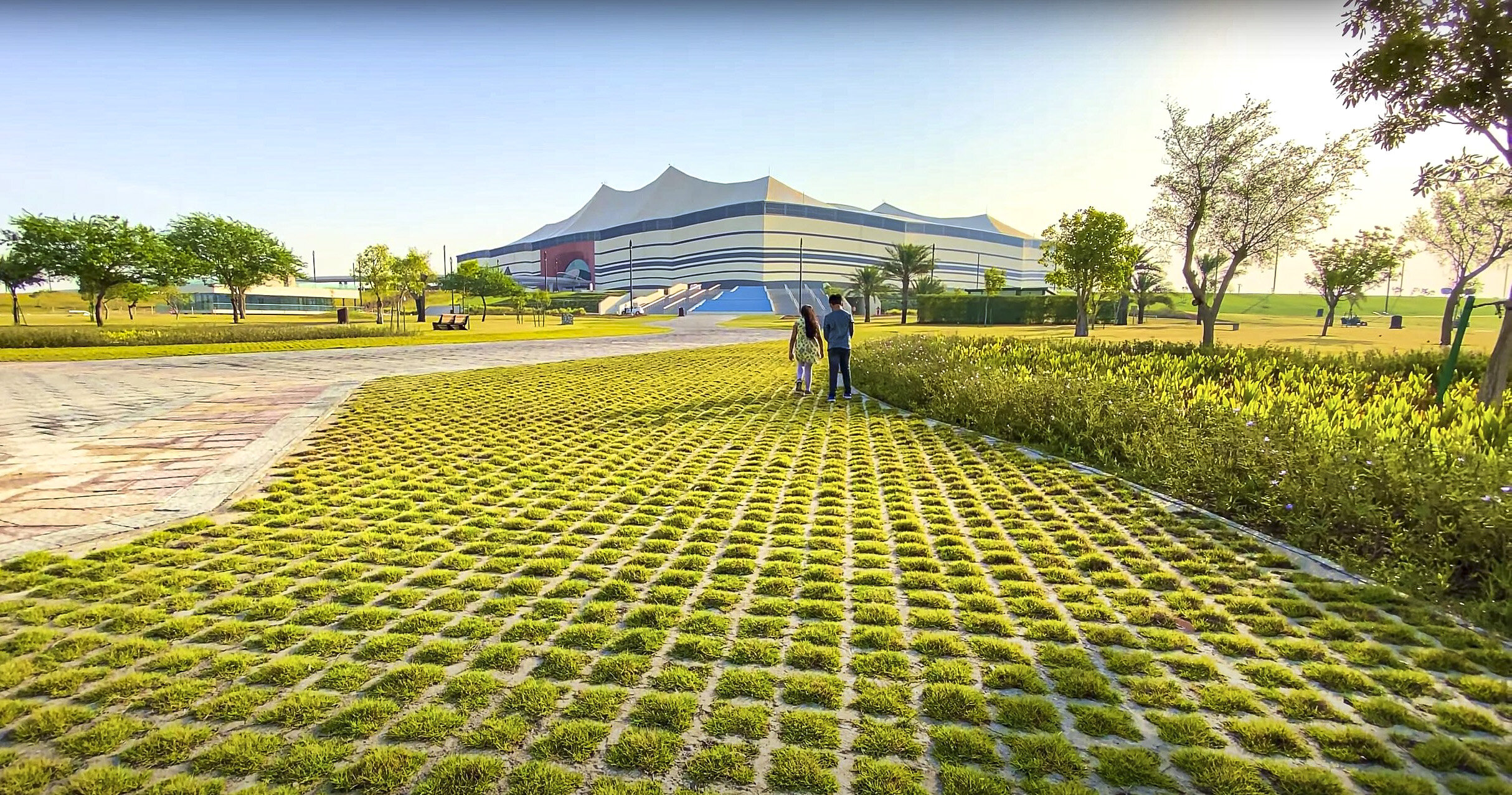Kiwi design to shine at the 2022 FIFA World Cup
Come November 2022 Al Bayt Stadium in Qatar will play a major role in the FIFA World Cup.
The stadium, in the coastal city of Al Khor about an hour’s drive to the north of Doha, takes its name from “bayt al sha’ar’ - tents historically used by nomadic people in Qatar and the Gulf region.
When the arena is finished it’ll be covered by a giant tent structure.
An aerial view of the complex.
And that nomadic tent theme is continued outside the venue, providing vital protection from the sweltering heat for those walking up to it.
Christchurch firm Glasson Huxtable Landscape Architects did the masterplan and detailing for the stadium park and podium in collaboration with Thom Craig Architects, who are also based in Christchurch.
Chris Glasson said providing shade from the unrelenting sun in the park was vital, especially for visitors to the region who were unused to it. But he wanted that shade to sit comfortably in its surroundings.
“You need to appreciate the context of a place,” Chris Glasson told Landscape Architecture Aotearoa. “The sails (on the path up to the stadium) reflect the tent-like structures. And we latched on to the sadu patterning for the paving and shade sails in our design to give it a local identity.
The podium on which the stadium and forecourt are built sits eight metres above the ground. Glasson says the design inspiration is based on an abstraction of the Arabian desert with the plaza located on the high plateau.
Wadis (channels of waterways which are often dry until flash flooding fills them) run off the plateau as waterfalls which form oases and give life to plants.
The park around the 60,000-seater stadium is two million square metres - around 30 football fields. Al Khor’s population is only around 60,000 and the client wanted to ensure there’s a legacy for families after the world cup.
So running, cycling and pedestrian tracks are included in the park. There are volleyball, basketball and tennis courts. A BMX track. Play areas, six restaurants with additional room for mobile food trucks.
Lush surroundings give the design a luxurious feeling.
The parking area can accommodate up to 6,000 vehicles and 300 buses. There’s an artificial lake. And a 1.7 km sandy track for camels and horses.
Glasson says the client didn’t want copses of trees, as we would have in New Zealand. “They are not a tree nation,” he says. “They preferred single trees so a family could sit under it and have their picnic.”
And while the trees chosen are used to the arid conditions (due to the blockade by nearby Arab countries trees were sourced from a local Qatari nursery) Glasson says it was difficult to replant and settle them because of the porosity in the sand. “They’ll have to be very careful about wilting.”
The client wanted single trees set out so families could picnic under them.
Because the grey water (treated sewerage effluent) from the stadium isn’t enough to irrigate the thousands of trees and lawn, water is piped via the national sewage network, treated and then directed to where it’s needed.
The park opened in February to positive feedback. Glasson is pleased with the relative smoothness of the project, and how his studio’s ideas were embraced.
“They were demanding (clients) in terms of quality but they are good people. And it (the project) was demanding in terms of time. There were 150 A1 plans.
“But I’ve worked on some demanding projects before (in China, Malaysia and the Middle East) and got through it alright. It’s never as easy as working in your own country, however you seldom get this kind of opportunity in your own country.
Inside the stadium.
“You have to think boldly, think globally and you’ve got to have the ability to do it, and I knew we did. You don’t have to have a lot of people, you just have to have the right people. It shows we are nimble and can work at that scale.”
So will he be ringside at the FIFA world cup as thousands admire his company’s handiwork? “Huh”, he laughs, “maybe, but it’s too soon to say. Two years, that’s a long way away.”
Other team members working on the project included Malcolm Campbell, Mark Huxtable, Erin Diao, Hillary Blackburn, Antonia Guthrey, Gina Langridge and Geraint Howells.









